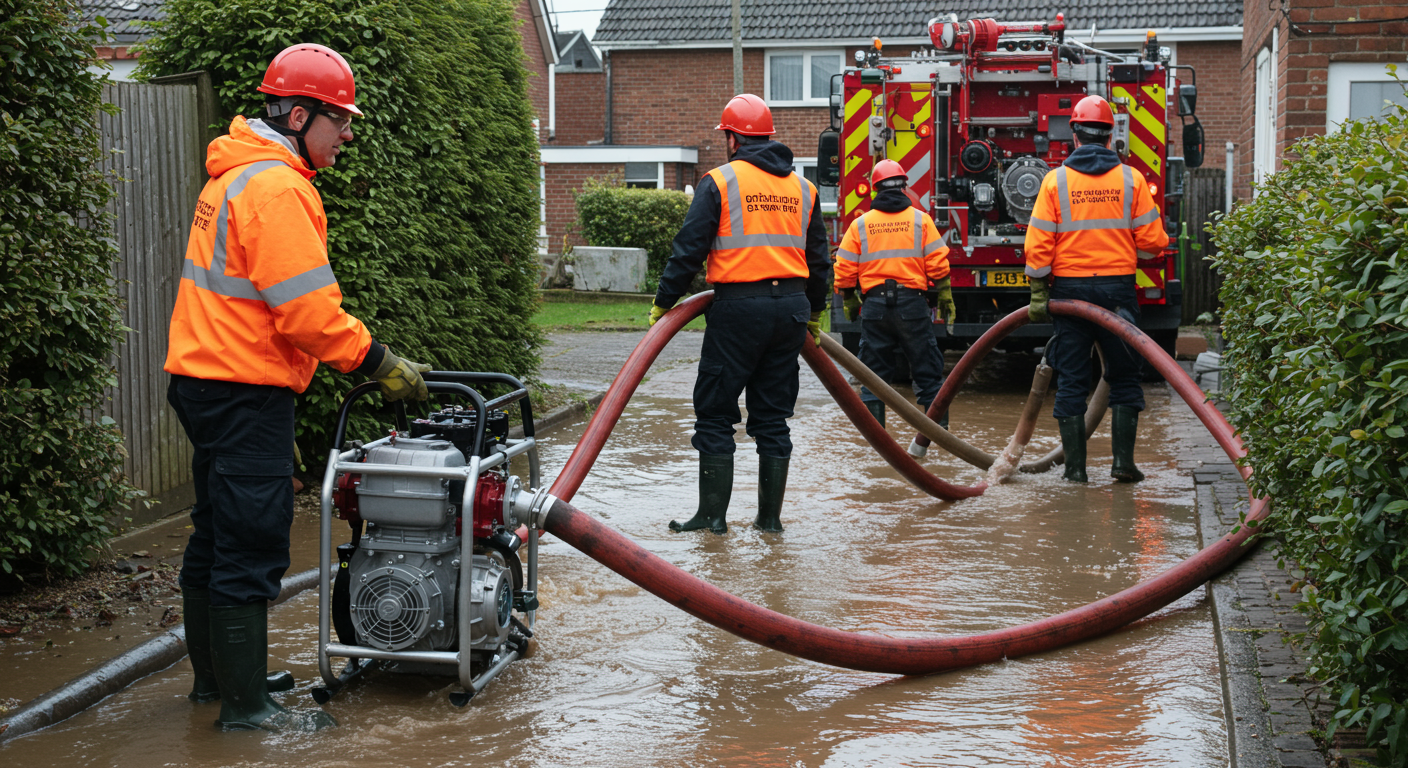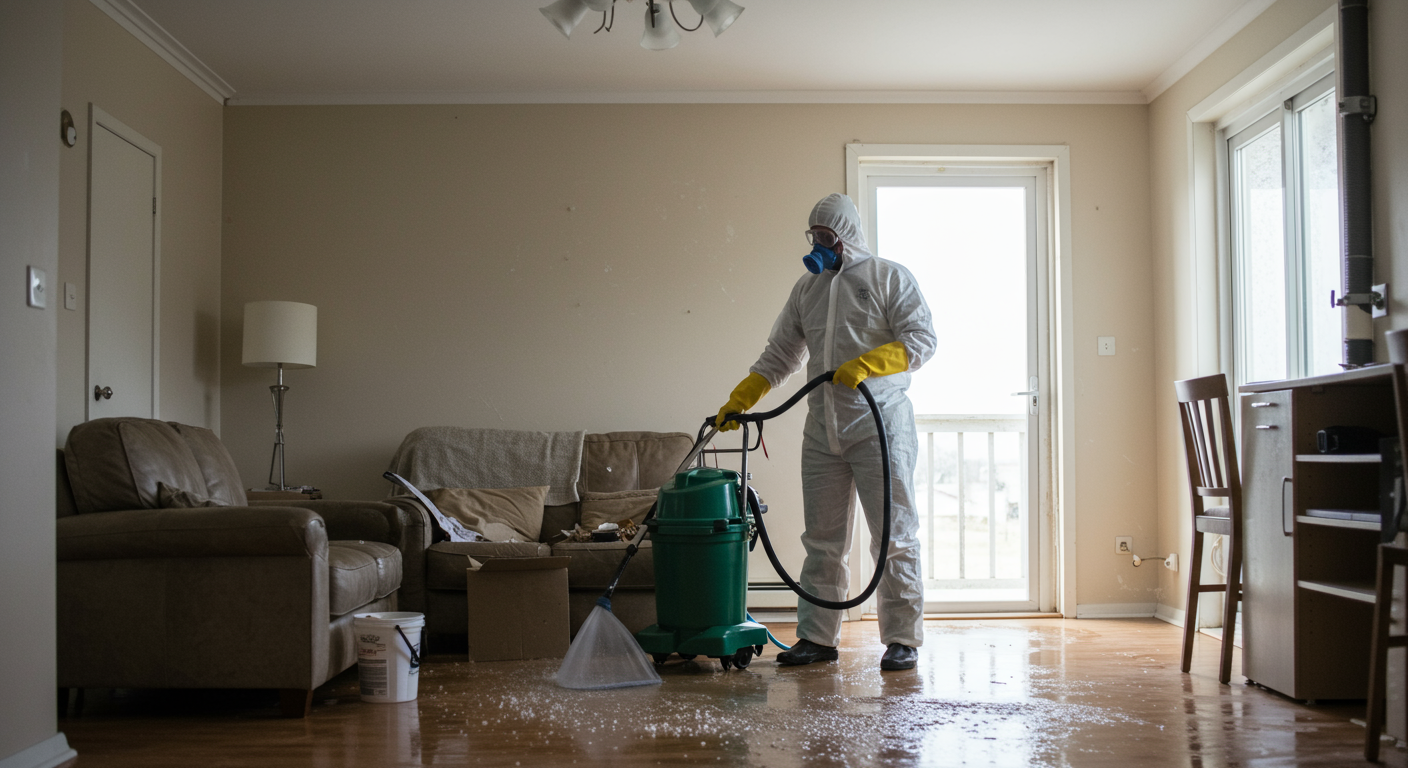Flood damage can be devastating, leaving homeowners and businesses in Glenview, IL, grappling with water-soaked properties and the risk of long-term structural issues. This article delves into the importance of professional flood damage cleanup, the comprehensive restoration process, and answers to common questions about flood recovery. Whether you’re dealing with a minor leak or a major flood, understanding the steps to recovery is crucial.
Understanding Flood Damage and Its Impact
Overview of Flood Damage
Flood damage occurs when water infiltrates your property, causing destruction to walls, floors, furniture, and even the foundation. Beyond the visible damage, floods can lead to hidden issues like mold growth and weakened structures. In Glenview, IL, the risk of flooding is heightened during heavy rains and snowmelt, making it essential to act quickly when disaster strikes.
Common Causes of Flooding in Glenview
Glenview residents often face flooding due to a variety of factors, including:
- Heavy rainfall overwhelming drainage systems.
- Snowmelt during the spring thaw.
- Burst pipes during freezing winters.
- Sewer backups caused by blockages or system failures.
Understanding these causes can help homeowners take preventive measures, but when flooding does occur, professional cleanup services are vital to mitigate damage and restore your property.
Why Choose Professional Flood Damage Cleanup?
Benefits of Hiring Experts
Professional flood damage cleanup services offer expertise, equipment, and efficiency that DIY efforts simply can’t match. Trained technicians use advanced tools like industrial-grade water extractors and dehumidifiers to remove water and moisture effectively. They also assess the extent of the damage, ensuring no hidden issues are left untreated.
Additionally, professionals can help with insurance claims by providing detailed documentation of the damage and restoration process. This support can make a significant difference in securing the compensation you deserve.
The Risks of DIY Flood Cleanup
While it may be tempting to handle flood cleanup on your own, DIY efforts often fall short. Without the right equipment and knowledge, you risk leaving behind moisture that can lead to mold growth and structural damage. Moreover, contaminated floodwater can pose health risks, making it unsafe to handle without proper protective gear.
Hiring experts ensures that your property is thoroughly cleaned, dried, and restored, reducing the risk of long-term problems and giving you peace of mind.
Our Comprehensive Flood Damage Restoration Process
Initial Assessment and Damage Evaluation
The first step in our restoration process is a thorough assessment of the damage. Our team inspects every corner of your property to identify affected areas and determine the best course of action. This evaluation helps us create a customized cleanup plan tailored to your specific needs.
Water Extraction and Drying Techniques
Once the assessment is complete, we use high-powered water extraction equipment to remove standing water quickly. Afterward, industrial-grade dehumidifiers and air movers are deployed to eliminate moisture from walls, floors, and furniture. This step is crucial to prevent mold growth and further damage.

Mold Prevention and Remediation
Mold can begin to grow within 24-48 hours of a flood, making prompt action essential. Our team uses antimicrobial treatments to prevent mold growth and, if necessary, performs mold remediation to remove any existing spores. This step ensures a safe and healthy environment for you and your family.
Frequently Asked Questions About Flood Damage Cleanup
How Quickly Should You Act After a Flood?
Time is of the essence when dealing with flood damage. Acting within the first 24-48 hours is critical to minimize damage and prevent mold growth. Contacting a professional restoration service immediately can save you time, money, and stress in the long run.
What to Expect During the Cleanup Process
The cleanup process typically involves several stages, including:
- Assessment: Evaluating the extent of the damage.
- Water Removal: Extracting standing water using specialized equipment.
- Drying and Dehumidification: Eliminating moisture to prevent mold growth.
- Cleaning and Sanitizing: Using antimicrobial treatments to ensure a safe environment.
- Restoration: Repairing and rebuilding damaged areas.
Each step is designed to restore your property to its pre-flood condition as efficiently as possible.
Insurance Coverage for Flood Damage Restoration
Flood damage is often covered by homeowners’ insurance, but coverage can vary depending on your policy. It’s essential to review your insurance plan and consult with your provider to understand what is included. Many professional restoration companies can assist with the claims process, providing documentation and working directly with your insurer.
Floods can be overwhelming, but with the right help, recovery is possible. If you’re in Glenview, IL, and need reliable flood damage cleanup services, don’t hesitate to reach out. Our team is here to restore your property and peace of mind.
For more information on emergency restoration services, check out 24/7 Emergency Restoration Services in Wheaton, IL or 24/7 Emergency Cleaning Services in Cicero, IL.

